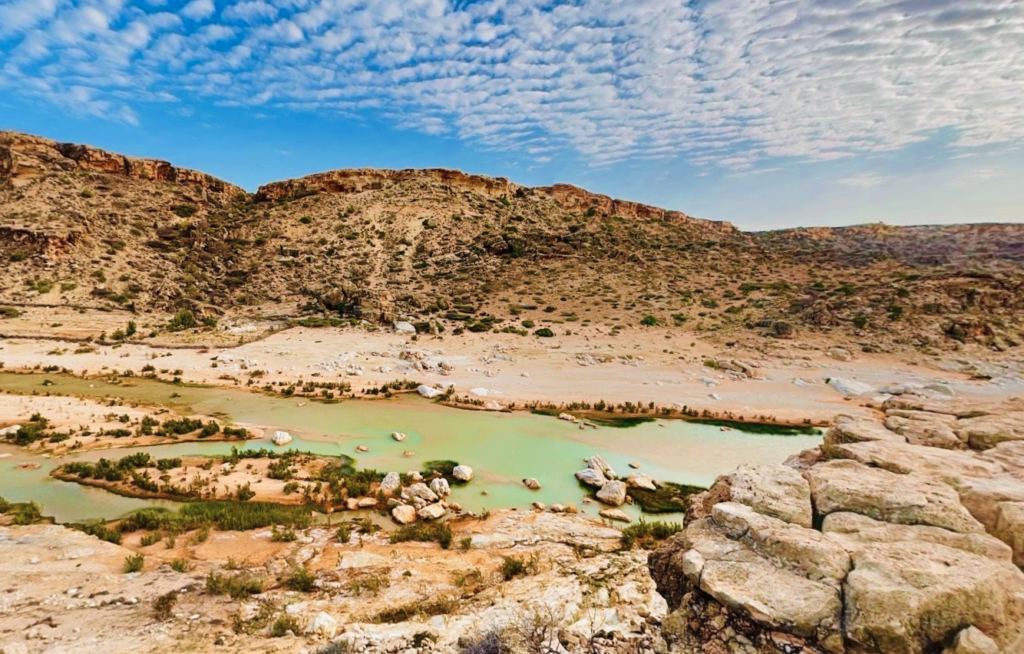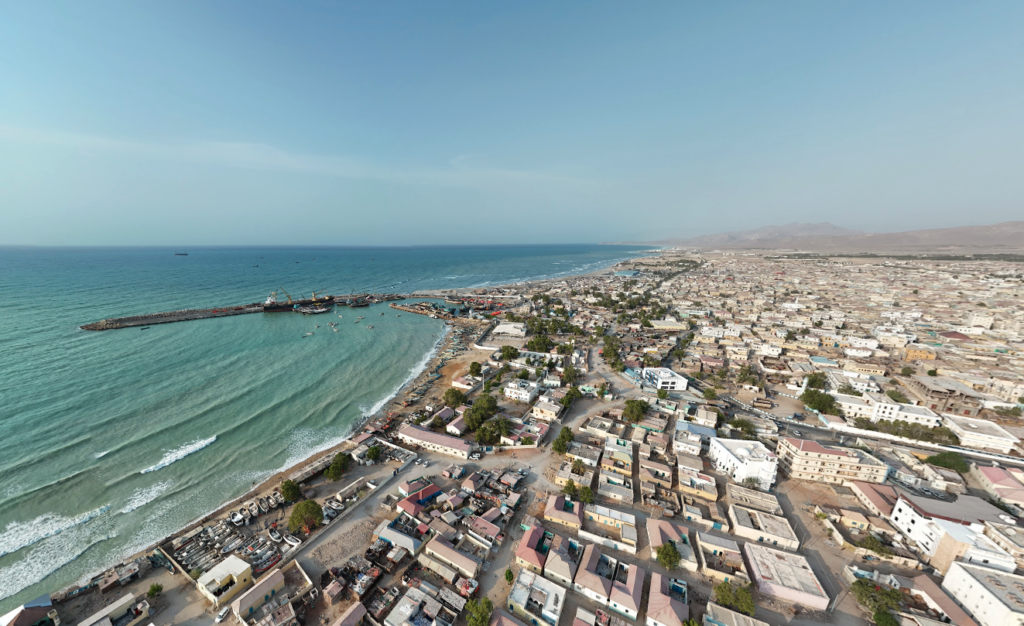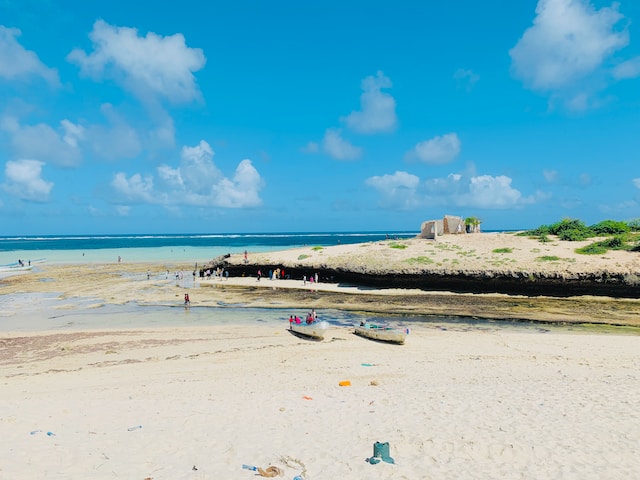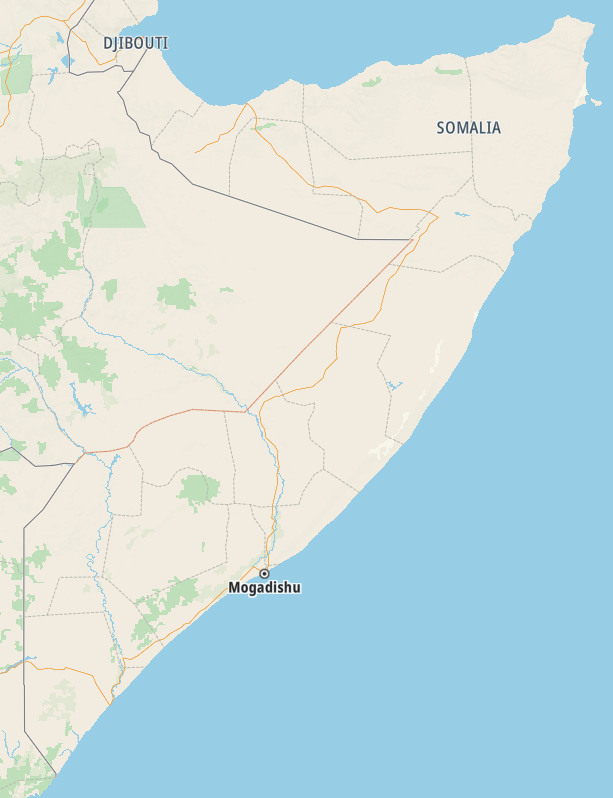Somalia / Jamhuuriyadda Federaalka Soomaaliya / جمهورية الصومال الفيدرالية – Let’s explore here

What’s it like in Somalia?
Somalia is an arid country on the Horn of Africa in east Africa. About twice the size of Norway, it has the longest coastline in Africa, at 2,070 miles (3,333 km) in length. In the north of the country lie some desert-like mountains, called the Galgodon Highlands. The highest point is Mount Shimbiris, at 8,070 ft (2,460 m) above sea level.
It has a long and very troubled history, involving much political instability, resulting in it being one of the least developed and poorest countries on the planet. The instability of the country has also resulted in it having a very young population, with 44% of the population being aged 15 and under (2014).
A large part of the country is currently disputed, although it’s unrecognised by any nation, Somaliland (2024). It is the largest unrecognised state in the world by de facto controlled land area.
The population of Somalia is around 18 million people (2023), about a quarter of whom live in the capital, Mogadishu. It shares land borders with Djibouti, Ethiopia and Kenya.

A bit about the history of Somalia
Pre-Colonial Era
Before European colonisation, Somalia was home to various nomadic tribes and city-states with rich trade connections. The coastal cities like Mogadishu, Zeila and Barawa were important trading hubs, engaging in commerce with the Arabs, Persians, and later, the Portuguese. Somali society was organised along clan lines, which still play a significant role in modern Somali politics.
Colonial Period
In the late 19th century, Somalia became a target for European colonial powers. The British controlled the north (British Somaliland), the Italians colonised the south (Italian Somaliland), and the French took control of Djibouti. Somalia was divided, with the British and Italians competing for influence. This division caused tensions and fostered a sense of national unity that would emerge later.
Path to Independence
Somalia gained independence on 1 July 1960, following the unification of British Somaliland and Italian Somaliland. The country’s first president, Aden Abdullah Osman Daar, took office, and Somalia became a republic. Early years were marked by attempts to build national unity and develop the economy, though challenges such as clan rivalries and political instability remained.
The Siad Barre Regime
In 1969, General Siad Barre came to power through a coup, establishing a socialist government. Barre’s regime focused on modernisation, education and infrastructure development. However, his government became increasingly authoritarian, and clan-based tensions grew. By the 1980s, opposition movements gained strength, and the country descended into civil war as Barre’s government collapsed in 1991.
Civil War and Collapse
The 1991 collapse of Barre’s government led to a brutal civil war. Clan-based militias vied for control, and the country fractured into fiefdoms. The humanitarian crisis was worsened by famine in the early 1990s, and international efforts to bring peace, such as a US-led intervention, failed to restore stability.
Transitional Governments
From 1991 to 2004, Somalia lacked a central government. Various regional governments and warlords controlled different areas of the country. In 2004, the Transitional Federal Government (TFG) was formed with international support, but it struggled to assert control. In the mid 2000s, the Islamic Courts Union (ICU) briefly took control of Mogadishu, leading to the intervention of Ethiopian forces in 2006 to support the TFG.
The Rise of Al-Shabaab
By the late 2000s, the militant group Al-Shabaab, an offshoot of the ICU, began to gain strength. The group aimed to establish an Islamic state and engaged in a violent insurgency against the Somali government and African Union peacekeepers. Al-Shabaab controlled large parts of southern Somalia but faced a concerted pushback from Somali forces, aided by international partners.
Establishment of the Federal Government
In 2012, Somalia’s Federal Government was formally established, with Hassan Sheikh Mohamud becoming president. This marked the beginning of a fragile recovery, with ongoing efforts to rebuild institutions and security. The government faced significant challenges from Al-Shabaab, as well as corruption and clan divisions.
Recent Developments
Somalia’s political landscape continued to evolve, with elections held in 2017, resulting in Mohamed Abdullahi Mohamed, known as Farmajo, becoming president. Under his leadership, there were efforts to improve security, develop infrastructure and combat corruption, though challenges persisted. Al-Shabaab remained a formidable threat, and the country faced issues with governance and economic development.
Somalia in 2025
As of 2025, Somalia remains a fragile state, grappling with challenges related to security, political instability and economic development. The Federal Government continues to work on rebuilding state institutions and tackling corruption. Al-Shabaab remains active, though its influence has been reduced in some areas. Somalia’s political system has become more stable, with elections taking place in 2021, but clan rivalries and disputes over resource distribution continue to pose challenges. The country’s economy is gradually growing, primarily driven by agriculture, but Somalia remains dependent on international aid.

Somalia road trip
Our Somalian road trip is part of a much larger African road trip.
Map of Somalia

What’s it like to drive in Somalia?
They drive on the right hand side of the road in Somalia. In the main, roads are very poor, with many being unsurfaced dirt tracks. Driving standards are also poor.
Do you require an international driving permit in Somalia?
We’ve created a dedicated page to driving abroad, which answers this question, and more, which you might find helpful.
Can you use your UK driving license when driving through Somalia?
We’ve created a dedicated page to driving abroad, which answers this question, and more, which you might find helpful.
Do I need a carnet de passages to drive in Somalia?
We’ve created a dedicated page to driving abroad, which answers this question, and more, which you might find helpful.
What currency do they use in Somalia?
In Somalia they use the Somali Shilling, although US dollars are also accepted in many places. Cash is widely used. The use of credit / debit cards is not accepted outside of the capital. Travellers cheques are not accepted. There are very few ATMs outside of the capital.
You should make yourself aware of the amount that your bank charges you for using credit and debit cards abroad. Often credit cards are cheaper for purchasing items directly, and for withdrawing cash from ATMs.
What language do they speak in Somalia?
They mainly speak Somali and Arabic in Somalia. Although English is also spoken widely, in particular among the younger generations. Some older people speak Italian.
What time zone is Somalia in?
Remember, when you’re planning your next trip to take a look at what time zone it’s in.
Do I need a visa to visit Somalia?
We’ve created a dedicated, more comprehensive page on visas, which you should find helpful. Check it out!
Is wild camping legal in Somalia?
Yes, wild camping is fine in Somalia.
What plug / socket type do they use in Somalia?

In Somalia they use plug / socket type C.
Health issues in Somalia
Is it safe to drink water in Somalia?
No, it is not safe to drink tap water in Somalia. Bottled water is readily available throughout the country.
What vaccinations are required for Somalia?
This NHS website is kept up to date with all relevant information on vaccinations in Somalia.
Phones in Somalia
What is the country calling code for Somalia?
The country calling code for Somalia is +252
What are the emergency phone numbers in Somalia?
- The emergency number for police in Somalia is: 888
- In Somalia, the emergency number for ambulance is: 999
- The emergency number for fire in Somalia is: 555
If you’ve got some useful info that you’d like to share, let us know!
And don’t forget to check out all the other pictures!
